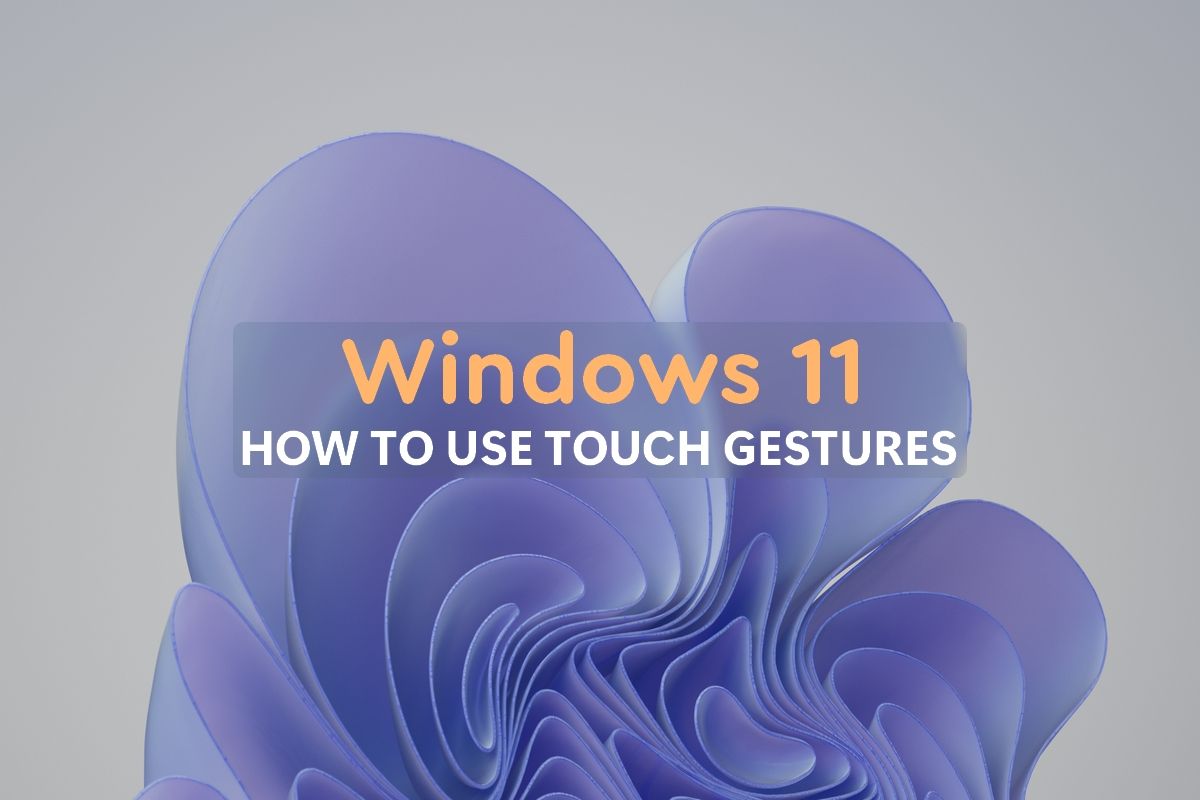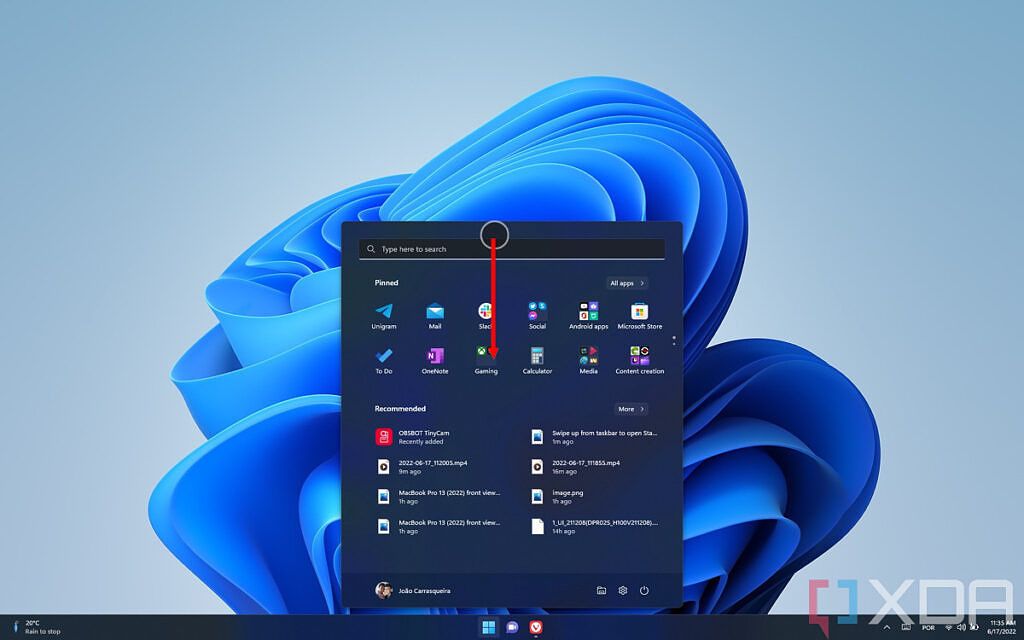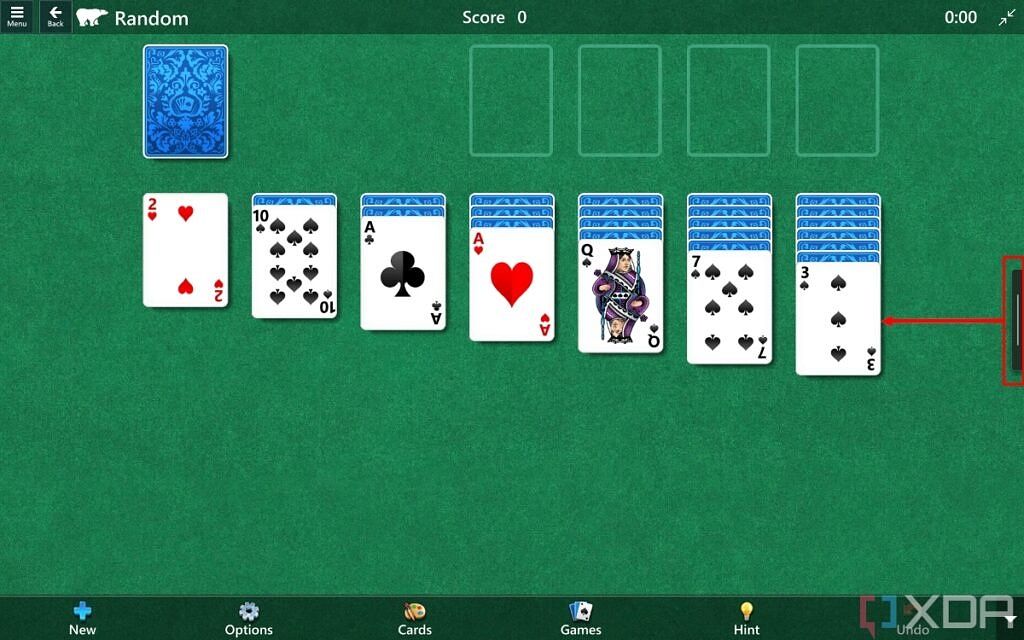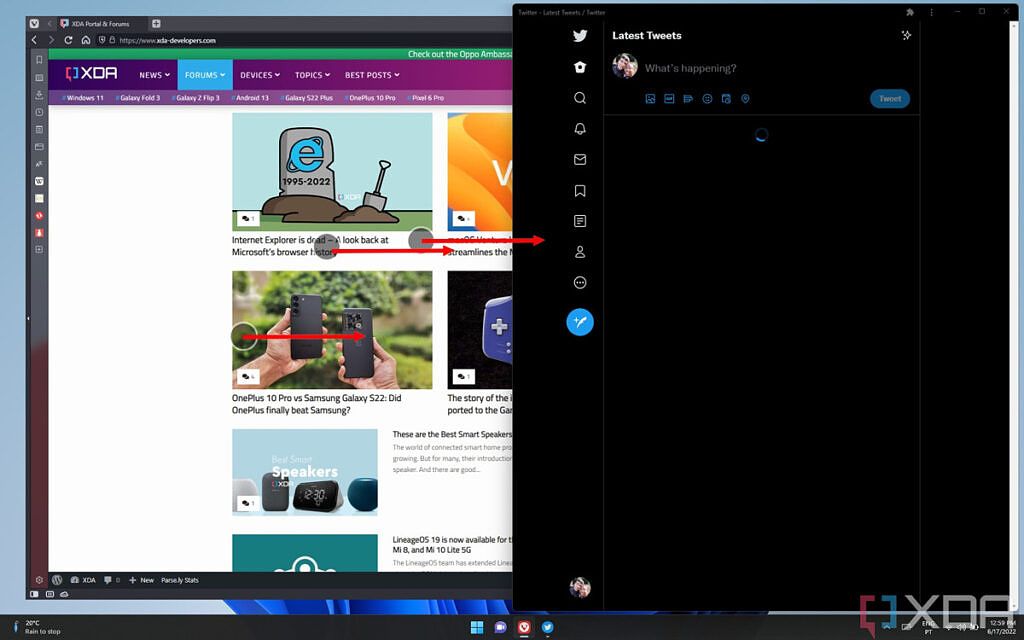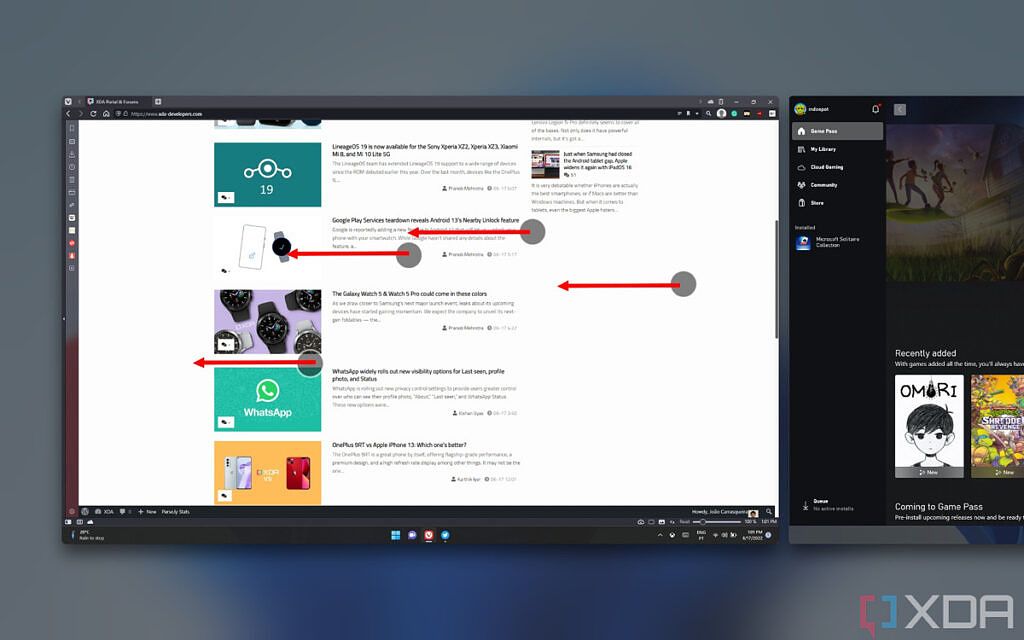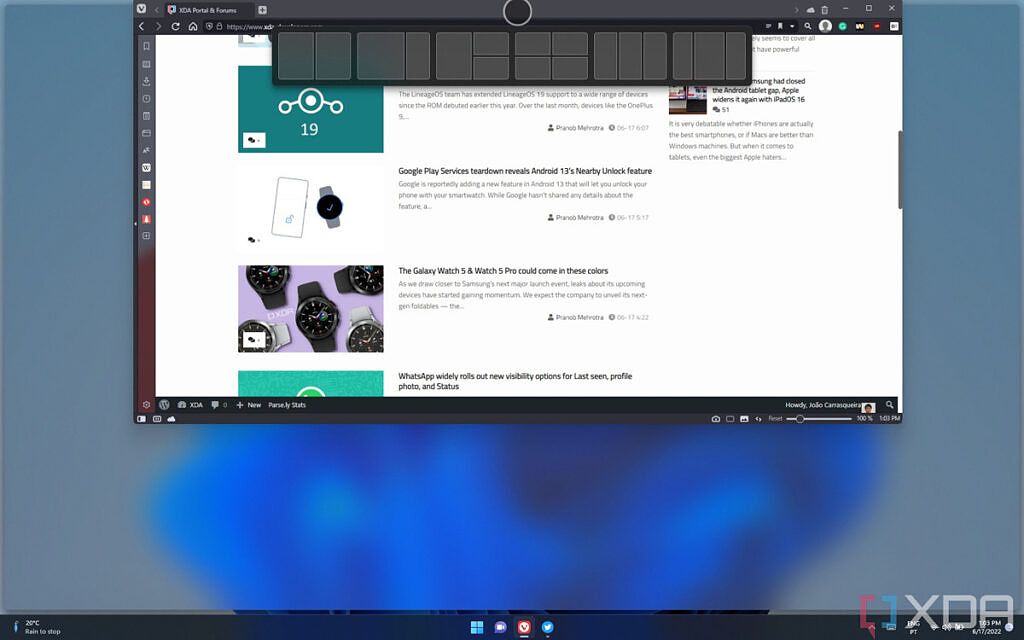Quick Links
Windows 11 brought many design changes and features to the table, and with version 22H2, there are a lot more of them. The original release of Windows 11 came with some new touch gestures for tablets and 2-in-1 PCs - many of which are among the best laptops on the market - but now, you can do things like open and close the Start menu, Quick Settings panel, and more using swipe gestures. As such, there's no better time than now to learn about all the touch gestures you can use on Windows 11 and what you can do with them.
Touch gestures are actions you can take, such as swiping on a particular area or using multiple fingers, to trigger specific actions. These gestures can make Windows 11 much easier to use, but they're not always totally transparent to the user. To help you out, we'll show you the basics of using touch gestures on Windows 11, specifically focusing on version 22H2 since it adds so much that's new.
One thing we have to mention is that, at writing time, Windows 11 version 22H2 is relatively recent, so you may not have all of these gestures yet. Go to the Settings app and then into the About page, and check your Windows version under Windows specifications. If it's version 22H2 or higher, you're good to go. With that out of the way, let's get started.
How to use the Windows 11 Start menu with touch gestures
Starting with Windows 11 version 22H2, the Start menu is one of the core areas where you can use touch gestures for navigation. First off, you can now open the Start menu by swiping up from the taskbar. You can do this gesture starting anywhere on the taskbar except the notification area (the small area in the right corner of the screen). As you swipe up, the Start menu will follow your finger, and you can always swipe back down to stop it from opening.
You can also swipe down to dismiss the Start menu once it's open. You will want to start swiping from an empty area of the Start menu, such as the top of the Start area. If your gesture starts over an app or file on the Start menu, the swipe action won't register.
You can use a couple more gestures in the Start menu. You can swipe right-to-left over the Pinned section of the Start menu to see the All apps list.
Or, if you start the swipe gesture over the Recommended section, you'll see a list of all your recent files and apps.
In both cases, you can swipe left to right to go back to the main screen of the Start menu. Of course, you can also use more basic things like swiping up and down on a list to scroll through it. On the Start menu's main page, you can swipe and down over the pinned area to move between pages, if you have more than one.
Quick Settings, Widgets, and Notification Center
There are even more parts of Windows 11 that can be accessed with touch gestures. Let's start with the Quick Settings panel, where you can connect to Wi-Fi, Bluetooth devices, and more. Remember when we said you couldn't open the Start menu by swiping up from the notification area? That's because that's how you open the Quick Settings panel. Your swipe gesture must start from the taskbar's right corner and go up.
Just like the Start menu, you can swipe down to dismiss it, too. This gesture will work on any area of the Quick Settings panel except the brightness and volume sliders.
You can also access the Notification Center and your calendar with touch gestures. To do this, swipe in from the right side of the screen. Start at the edge of the screen and swipe left, and you'll be able to see your notifications and calendar. You can also swipe right from an empty area (such as the calendar and notifications headers) to dismiss it.
Finally, on the opposite side of the screen, you can access the Widgets panel. Swipe in from the left edge of the screen to see your widgets, such as weather, finance, OneDrive, and so on. Unlike the other areas, the Widgets panel automatically appears as soon as the touch gesture is recognized, so it won't follow your finger. You also can't swipe to dismiss the Widgets panel, though touching the desktop or anything else will automatically dismiss it.
Both the Widgets and Notification Center touch gestures already existed in the original Windows 11 release, but the Quick Settings shortcut is new in version 22H2.
If you're using a full-screen app, the gestures to bring up these panels or the Start menu must be performed twice. You'll notice a little "gripper" shows up when you swipe the first time, and you need to swipe it again to confirm you want to bring up the panel you're trying to see. This is so you don't accidentally interrupt what you're doing in full-screen mode.
Collapsible taskbar
With a recent update to Windows 11 (build 22621.1344), tablets and 2-in-1 computers can now display a smaller taskbar when there's no keyboard or mouse attached to the computer. This saves space on the screen for whatever content you want to focus on. If you want to see the full taskbar, you can swipe up from the bottom of the screen to bring it up and see your taskbar icons. You can do this from anywhere on the taskbar.
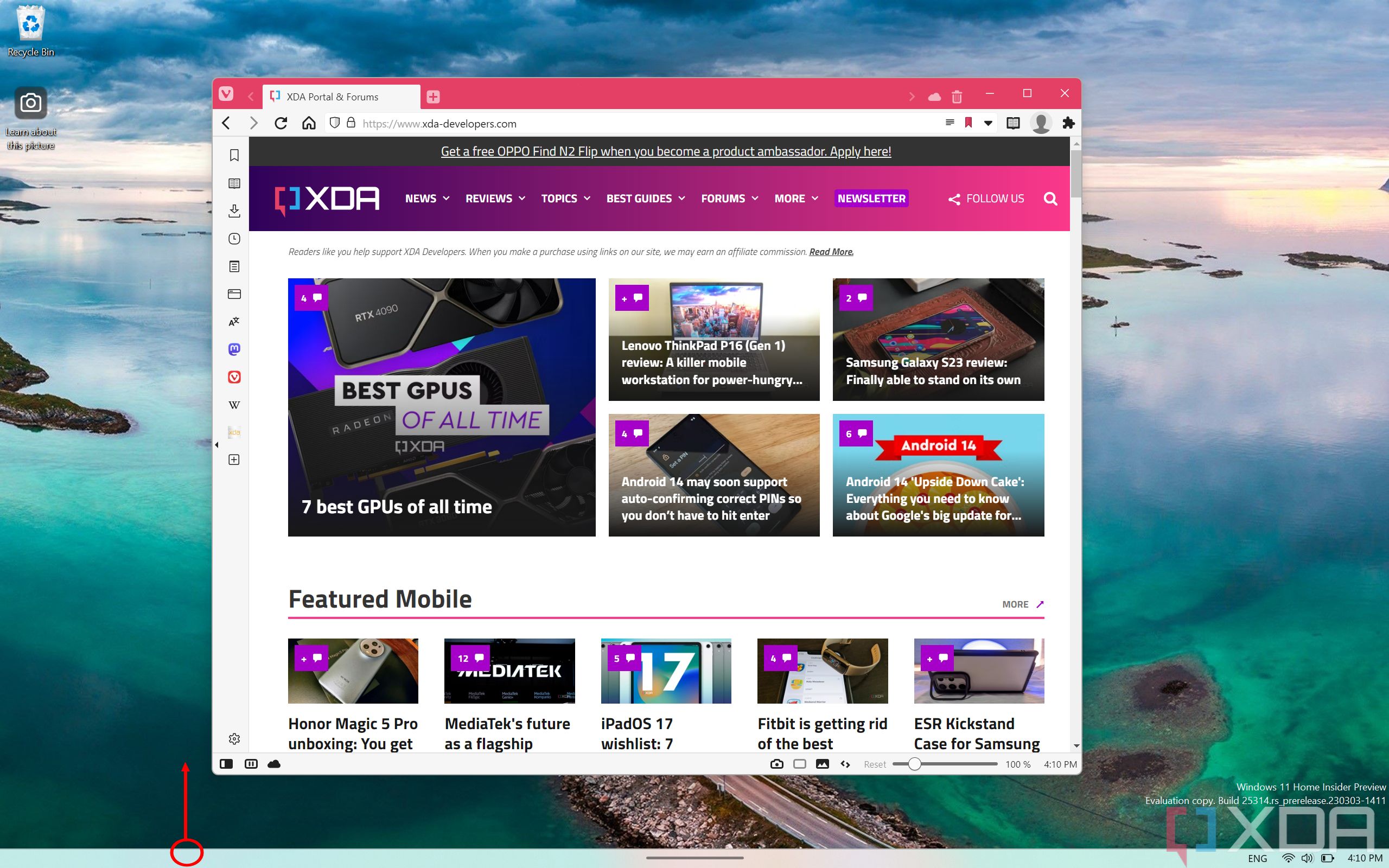
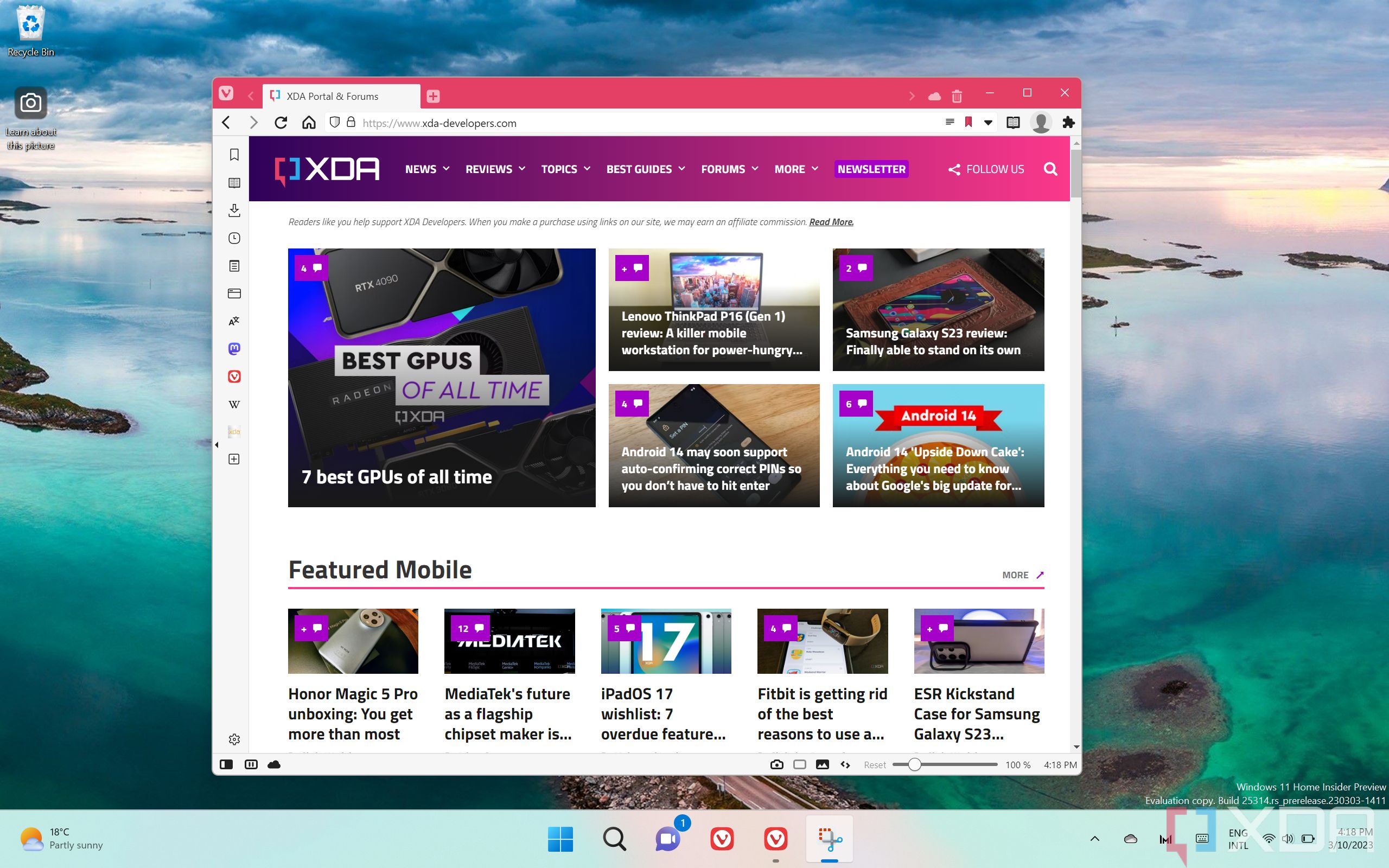
All the gestures above work just as before, and you only need to swipe once to bring up the Start menu or any of the other panels mentioned above. If you only want to see the taskbar without opening the Start menu, you'll have to make sure the swiping gesture stops at the height of the expanded taskbar.
Window management with touch gestures
Finally, there are a couple of touch gestures you can use to manage your open windows. These aren't super in-depth, but they do make things easier. For starters, you can minimize all your open windows by swiping down anywhere on the screen using three or four fingers at the same time. This is a quick way to get to your desktop or hide something you're working on.
If you swipe up with three fingers right after minimizing your windows, you can restore them all. However, you can also swipe up with three (or four) fingers at any time to open Task view, showing all your open apps and virtual desktops.
So far, these gestures are part of the original Windows 11 release, but version 22H2 introduces a new one: swiping sideways with three fingers. If you swipe either to the right or left with three fingers at the same time, you can switch to your most-recently-used app (aside from your current active window, of course). It only switches between your last two active apps so that you can go back and forth between them quickly.
On the other hand, if you swipe sideways with four fingers instead of three, you can quickly switch virtual desktops, too. It can be difficult for this gesture to be recognized consistently, but it makes it much easier to quickly switch between different desktops, so you can hop between work and entertainment on the fly.
Unlike the three-finger gesture to switch apps, this one doesn't work in a cycle. It uses the order you have created for your virtual desktops, and you can switch to any of them by repeating the gesture. When you first start swiping, you can see the virtual desktops immediately next to your current one and choose which one you want. This gesture is also available in the original Windows 11 release.
Finally, while it's not necessarily a touch-exclusive gesture, it's worth mentioning there's now a way to access Snap layouts using touch in version 22H2. When you touch the title bar of a window and drag it near the top of the screen, a series of Snap layouts will appear, and you can drag the window into any of the available spaces to start creating the layout you want.
And that's about it for all the touch gestures you can use in Windows 11, particularly with version 22H2. As a reminder, this update isn't yet available for everyone, but it should be rolling out in the next few weeks. In the meantime, if you want to learn more about its new features, check out how to use Start menu folders, which were also introduced with Windows 11 version 22H2.

